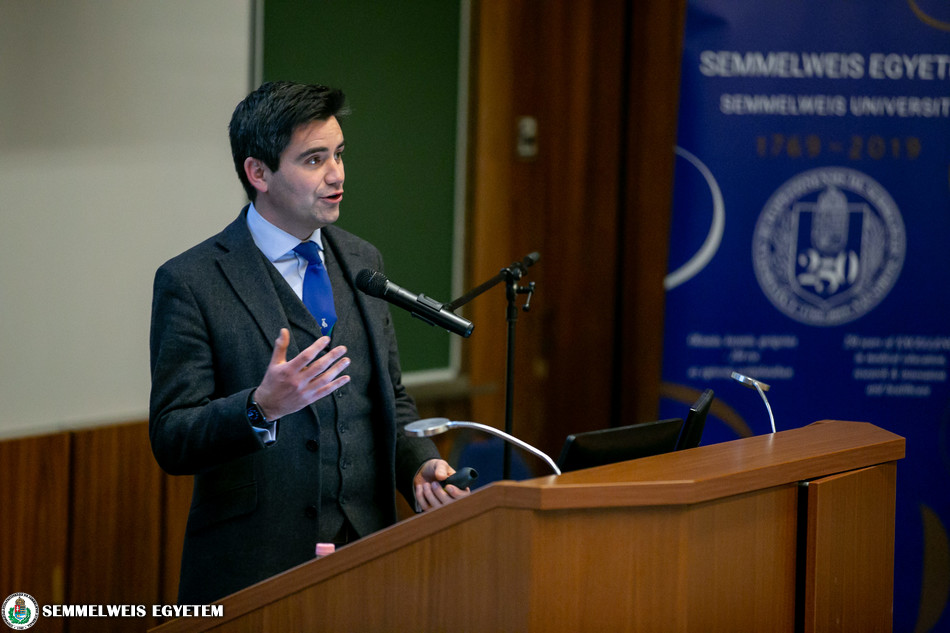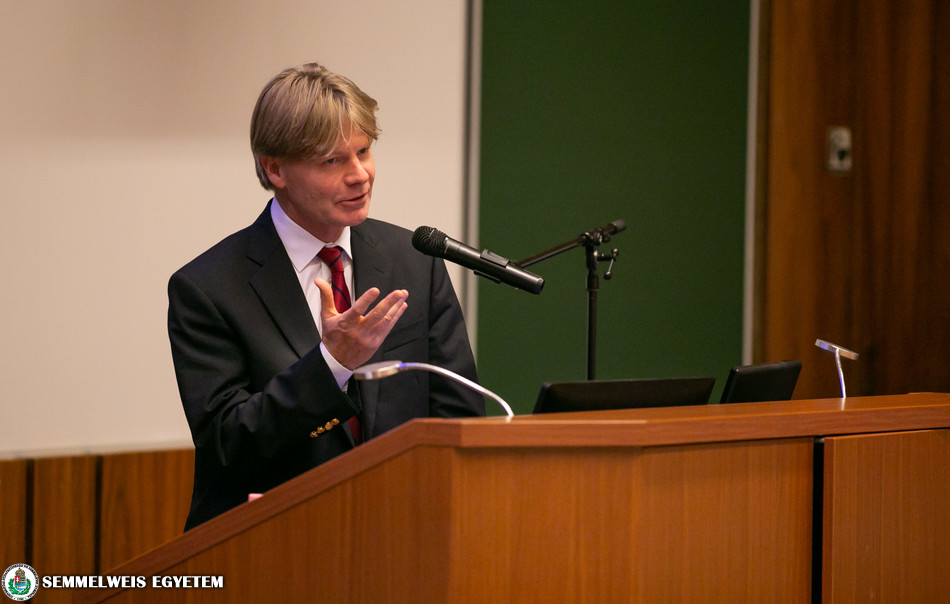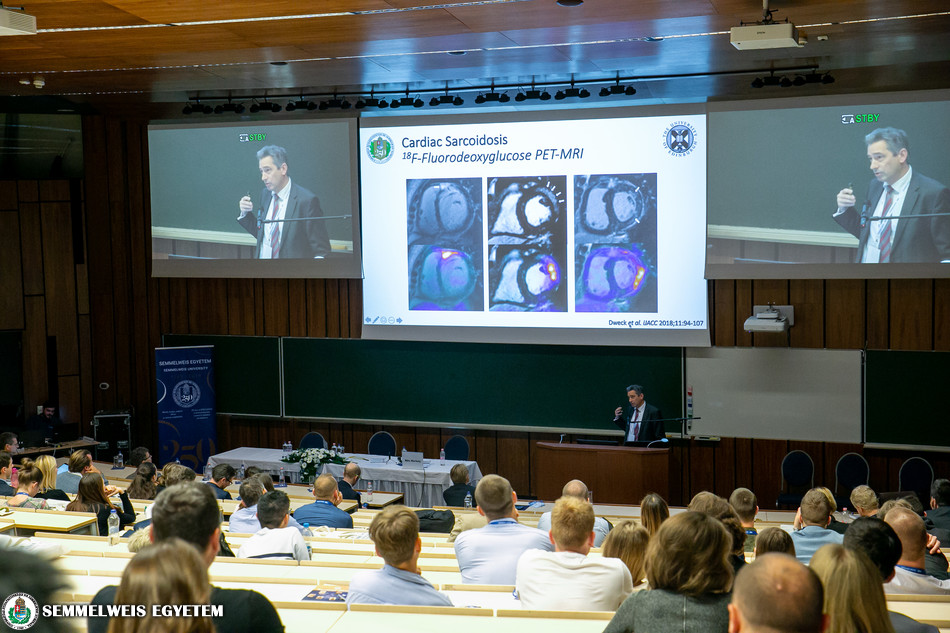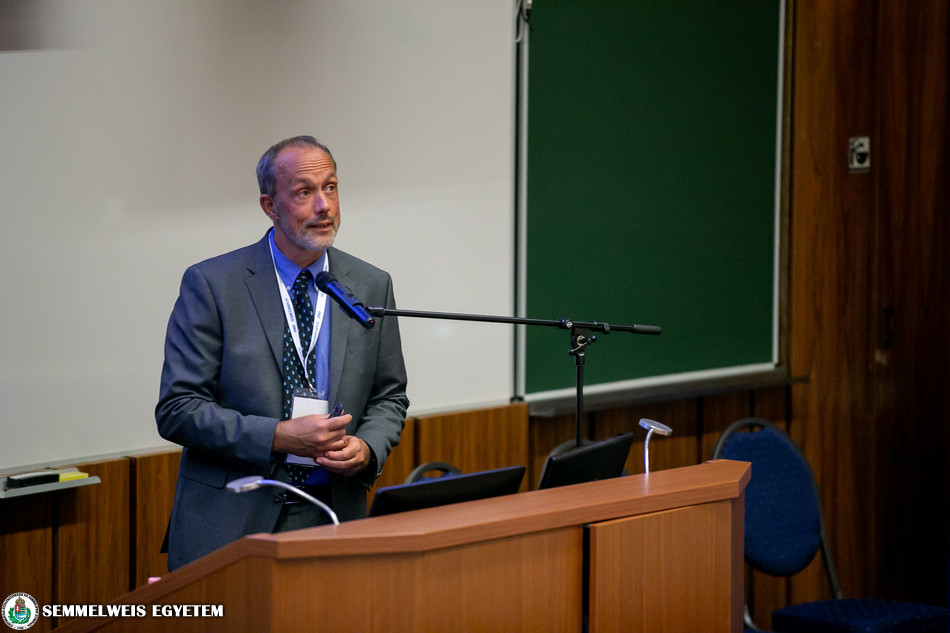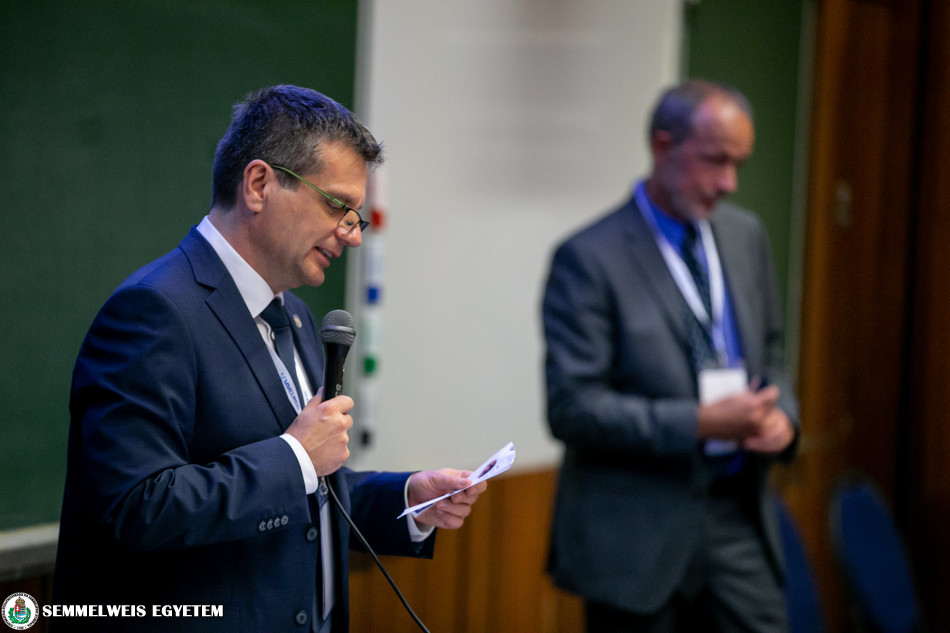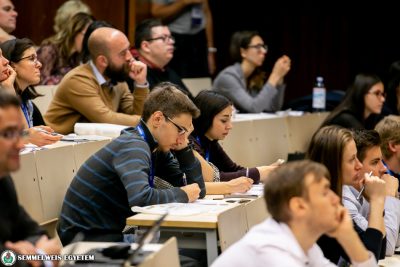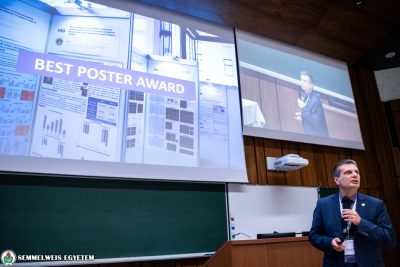The first keynote presentation at Semmelweis Symposium focused on the link between diabetes and heart failure and was held by Dr. Michel Komajda, world-famous researcher of heart failure and former president of the European Society of Cardiology (ESC). Prior to the lecture, Professor Komajda was awarded with the title of honorary doctor, which he thanked in Hungarian, praising Hungarian scientific life, Semmelweis University and Hungary. (Click here for details on the ceremony and the presentation of the Doctor Honoris Causa titles). In his lecture, professor Komajda pointed out that one third of patients involved in clinical trials for heart failure suffer from diabetes mellitus. Registry data also confirm an increased incidence of heart failure in diabetic patients. The underlying causes are, among others, sedentary lifestyle and the disorder of the neurohormonal system.
During the first day of the conference, the other awardee of the honorary doctor title, Dr. Jeroen Bax, outstanding professor and former President of ESC, gave a keynote presentation at the ceremony. In his practical presentation he described current and potential future indications for percutaneous heart valve implantation through case studies. The toolkit of cardiology has undergone an amazing development over the past ten years. He pointed out that several structural heart diseases that were previously curable only by surgery can now be treated by minimally invasive catheter-based methods.
Dr. Stephan Achenbach spoke about the role of cardiac CT scan in his keynote presentation. He emphasized that due to its excellent spatial and temporal resolution, the device is becoming an increasingly important imaging method for interventional cardiologists in planning interventions for structural heart disease and in monitoring patients.
In the second half of the imaging session, Dr. David Newby and Dr. Marc Dweck talked about the latest developments in molecular imaging. Both are from the University of Edinburgh, Professor Newby is head of the Department of Cardiology. He is associated with a number of major clinical trials that have greatly influenced the tendencies of modern patient care in cardiology. In his presentation, he talked about the detection and follow-up of vulnerable, high-risk coronary plaque with PET-CT. In his lecture, Dr. Dweck said that molecular imaging could promote the more accurate risk assessment of patients with aortic valve disease and help developing personalized treatment strategies.
The fourth keynote speaker of the day, Professor Rainer Schulz, gave an exciting presentation on mitochondria as the engine of the heart, introducing the latest results of his own and other research groups. In the final session of the first day, the lectures focused on cardiotoxicity and cardioprotection, under the chairmanship of Dr. Péter Ferdinandy Vice-Rector for Science and Innovation, Director of the Department of Pharmacology and Pharmacotherapy and Pál Pacher, Research Professor of the National Institute of Health (USA).
Professors Pietro Ameri and Giorgio Minotti described the cardiovascular effects of antitumour therapies. In his closing presentation, Professor Thomas Thum gave a futuristic presentation on non-coding RNA-based therapies.
Dr. Pál Maurovich-Horvat
Photo: Attila Kovács – Semmelweis University
Video interviews: Tamás Deme, Eszter Keresztes
Translation: Ágnes Raubinek

